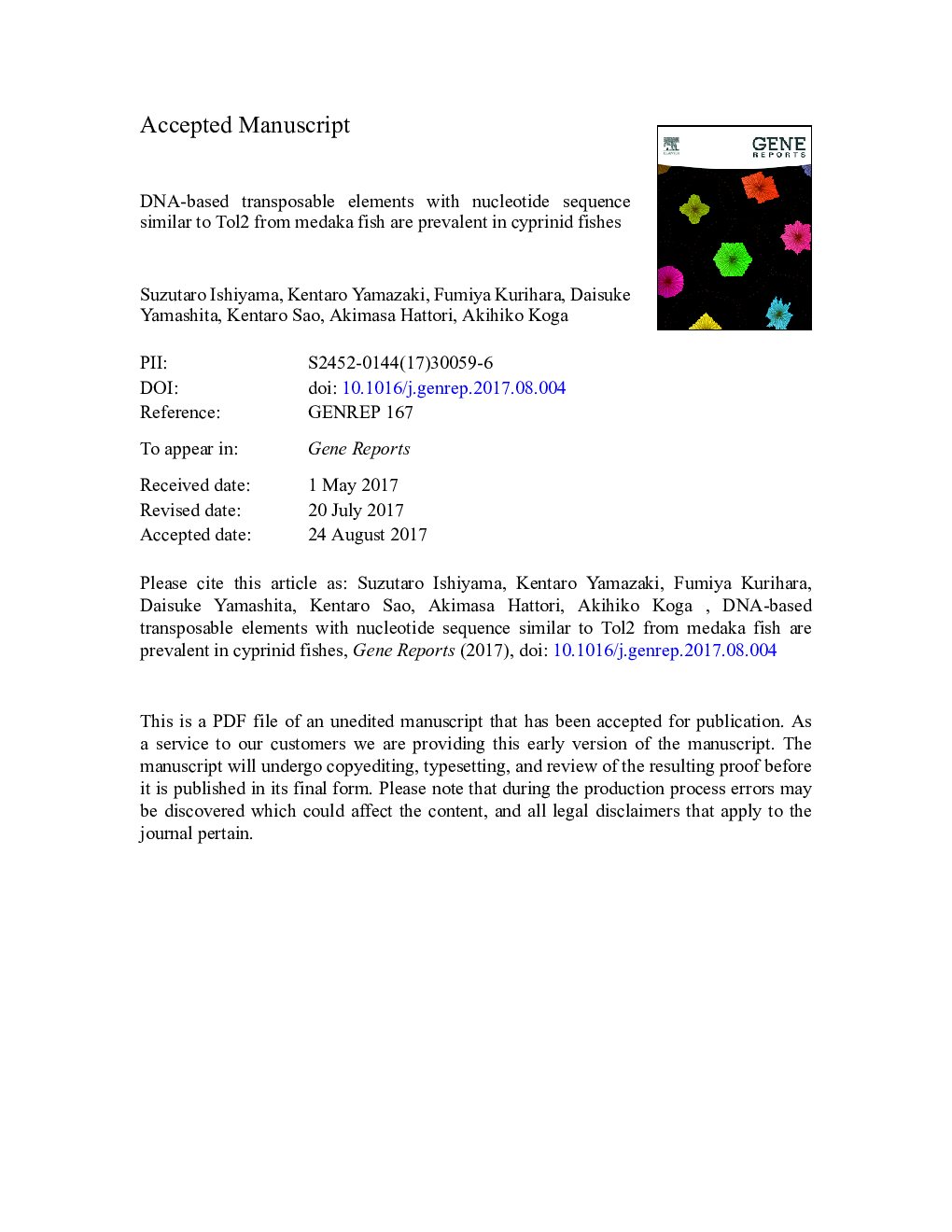| Article ID | Journal | Published Year | Pages | File Type |
|---|---|---|---|---|
| 5589959 | Gene Reports | 2017 | 33 Pages |
Abstract
DNA-based transposable elements have been almost completely inactivated in vertebrate genomes. Tol2 is one of the few elements that were found in vertebrates and have been shown to be active. It is a member of the hAT (hobo/Activator/Tam3) transposable element family and was first identified in the medaka fish (Oryzias latipes) as an insertion sequence interrupting the tyrosinase gene of an albino mutant. Recently, an element named Tgf2 that exhibited a nucleotide identity as high as 97% with Tol2 was found in the goldfish (Carassius auratus), and its transposition activity was demonstrated. Goldfish is a species belonging to the order Cypriniformes, which is often represented by the common carp and includes zebrafish. Here, we surveyed 43 species of this order, with a focus on the Cyprinidae family, for the presence of Tol2-like sequences by PCR and Southern blot analyses. A wide distribution of such sequences was observed among cyprinid fishes. The hAT family elements generally tend to lose their internal regions over time, especially the central portion, by deletion mutations and all copies of the element in the genome are eventually shortened and inactivated. Our survey showed that approximately half of the cyprinid fishes examined retained this central region, suggesting that these elements have not been completely inactivated in the Cyprinidae family, and possibly also in the order Cypriniformes.
Related Topics
Life Sciences
Biochemistry, Genetics and Molecular Biology
Genetics
Authors
Suzutaro Ishiyama, Kentaro Yamazaki, Fumiya Kurihara, Daisuke Yamashita, Kentaro Sao, Akimasa Hattori, Akihiko Koga,
